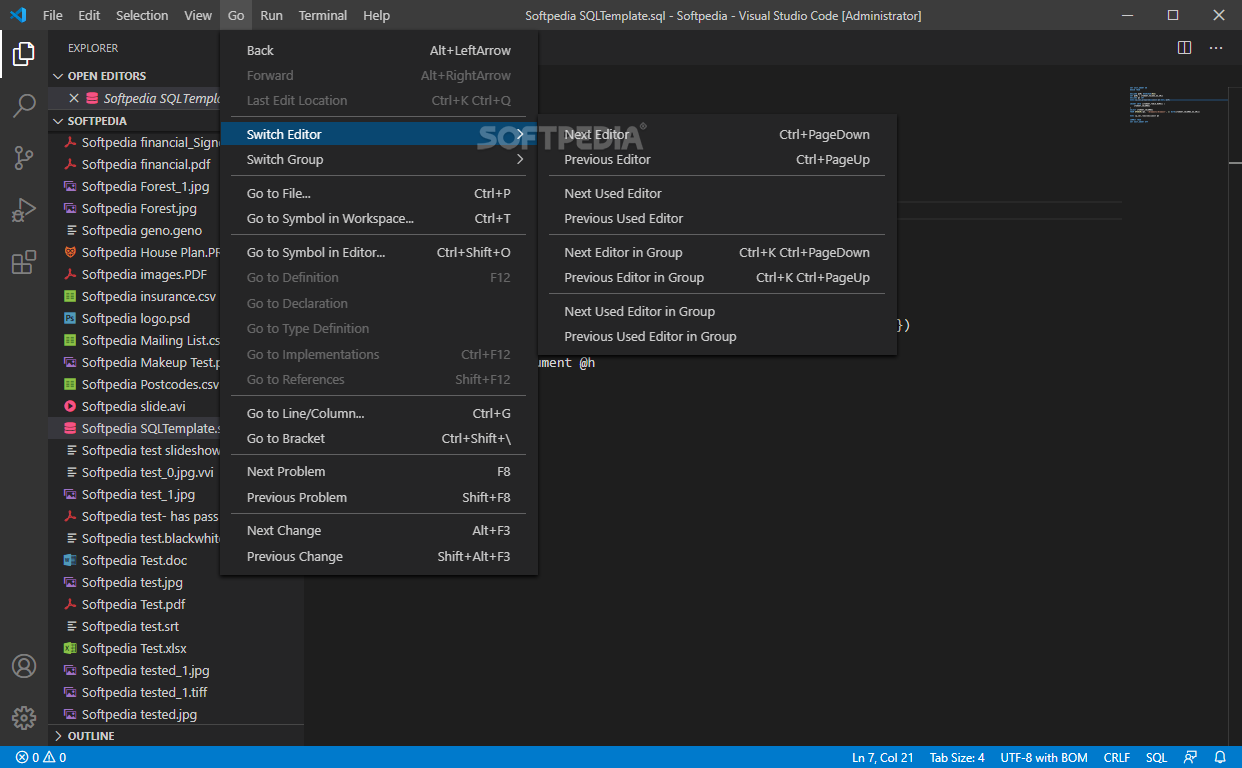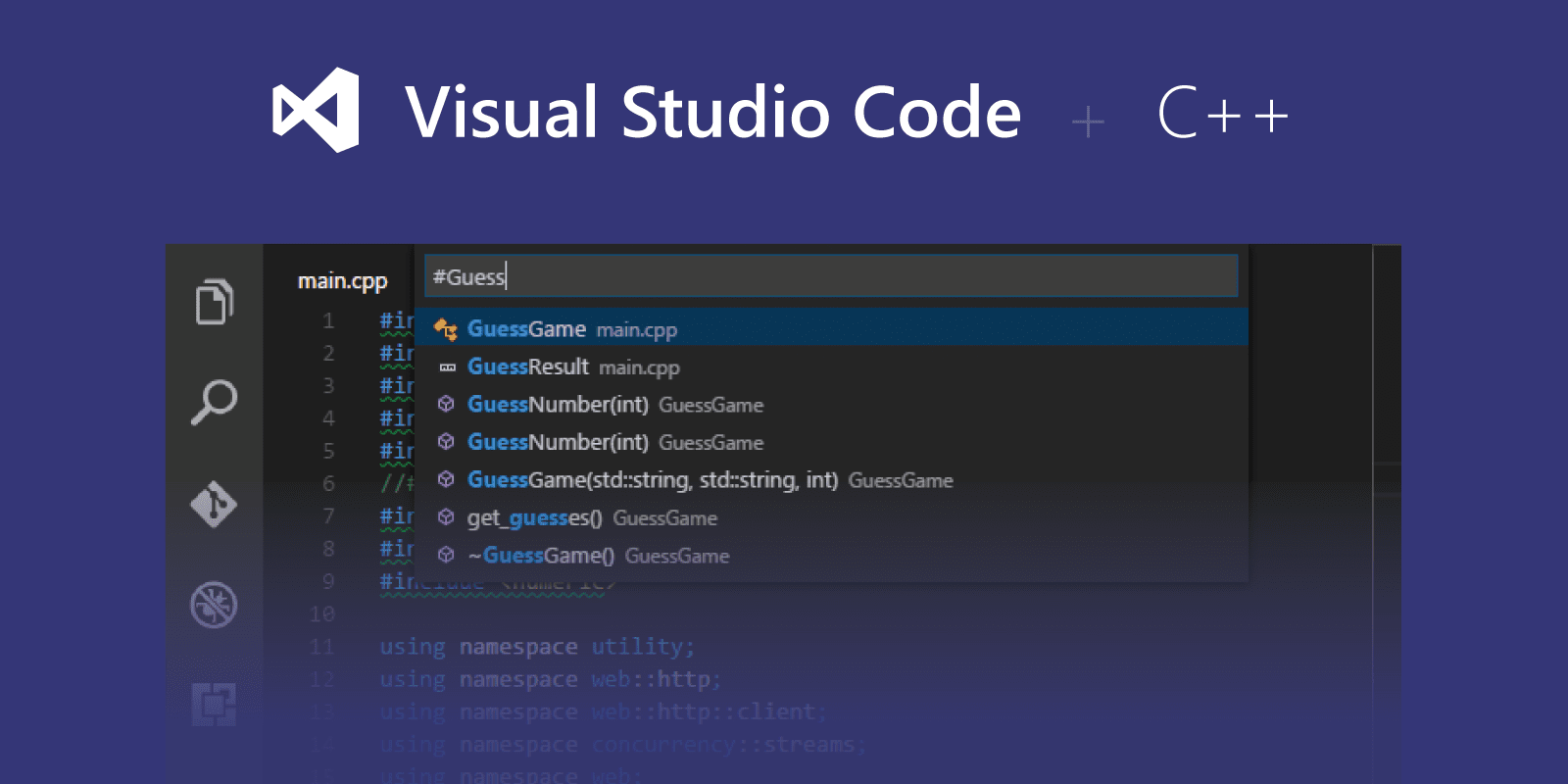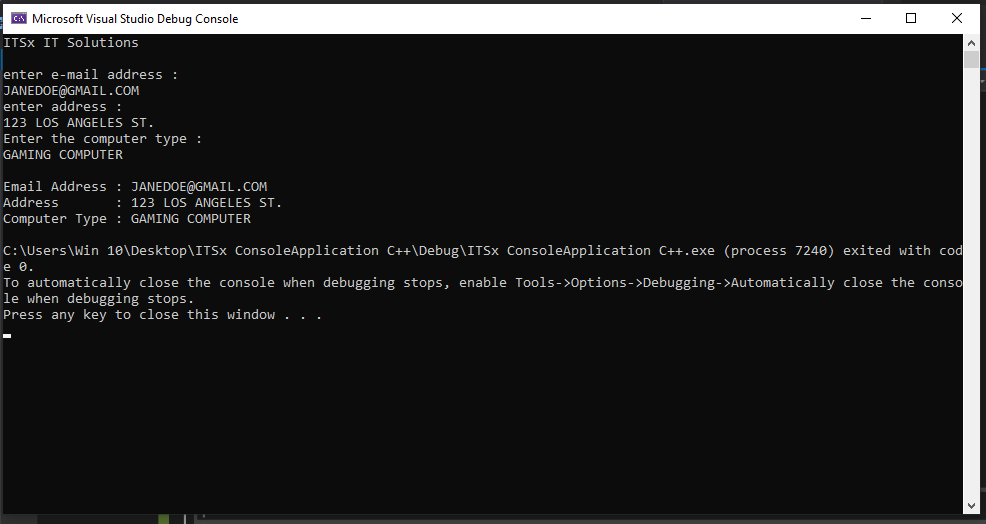

- C++ VISUAL STUDIO CODE COMPLICATED HOW TO
- C++ VISUAL STUDIO CODE COMPLICATED INSTALL
- C++ VISUAL STUDIO CODE COMPLICATED UPDATE
- C++ VISUAL STUDIO CODE COMPLICATED FREE
- C++ VISUAL STUDIO CODE COMPLICATED WINDOWS
The main motivation for a new optimizer framework was the desire to have more aggressive optimizations, such as ones that take advantage of more compile-time information and modern compiler developments.
C++ VISUAL STUDIO CODE COMPLICATED UPDATE
Update : The new optimizer is now also available as part of Visual Studio Update 3 RC. Once installed, compile your applications the usual way – the optimizer is enabled by default on all architectures.
C++ VISUAL STUDIO CODE COMPLICATED HOW TO
Details about how to do this are available in this blog post.
C++ VISUAL STUDIO CODE COMPLICATED INSTALL
The compiler bits with the new optimizer are very easy to get: just install the latest VisualCppTools package using NuGet. The official release of the new optimizer is expected to be Visual Studio Update 3, while the release available today is unsupported and mostly for testing purposes. This is the first public release and we are encouraging people to try it and provide suggestions and feedback about potential bugs. It provides many improvements for both code size and performance, bringing the optimizer to a new standard of quality expected from a modern native compiler. The last step can be done by adding “testfor.lib” into Project-> Properties-> Configuration Properties-> Linker-> Input-> Additional Dependencies. Remember the resultant exe file do require the testfor.dll in the path in order to run.We are excited to announce the preview release of a new, advanced code optimizer for the Visual C++ compiler backend. What we need to do is simply add the testfor.lib in the resource folder and let VS know you need it to compile. Now we need to go into Visual Studio to set up.

Now we have what we need, the testfor.lib and testfor.dll. The last line with lib.exe earlier is to create the import lib with the def file. It may complain with the following error:ĭllwrap.exe: no export definition file provided.Ĭreating one, but that may not be what you wantīut I think we can ignore it. The dllwrap.exe comes with MinGW as for as I know. Second command creates the definition file (.def) and the dll file (.dll). To get these files, we need to the following steps:ĭllwrap.exe -export-all-symbols testfor.o -lgfortran -output-def f -o testfor.dllįirst command is simply compiling our Fortran module into an object file. Here is the main dish! In Windows, we need the “import” library (.lib) and dynamic library (.dll).

Note that the input argument for the Fortran function must be a pointer as Fortran is pass-by-reference only. The “extern C” syntax acts as an interface. Next, my C++ main function is very simple as well: Anyway, that helps us clean up the code a little. If you are using the old (pre-2003) style, the naming convention for a function in a module may be a little complicated. The “bind” syntax allow you to customize the function name to be called in C++. Note that I am using Fortran 2003 standard “iso_c_binding”. Print *, "# calling testfor in Fortran!!" Subroutine testingfor(x) bind(c, name="testingfor") My Fortran code is just a simple function in a module:

MinGW gfortran (64bit, using the one from Msys here).
C++ VISUAL STUDIO CODE COMPLICATED FREE
Visual Studio 2015 (C++) (I am using the free community version).
C++ VISUAL STUDIO CODE COMPLICATED WINDOWS
I will be focusing on MinGW gfortran as that is a popular free Fortran compiler on Windows platform. Here I describe a little on how to call Fortran code from C++ using Visual Studio.


 0 kommentar(er)
0 kommentar(er)
